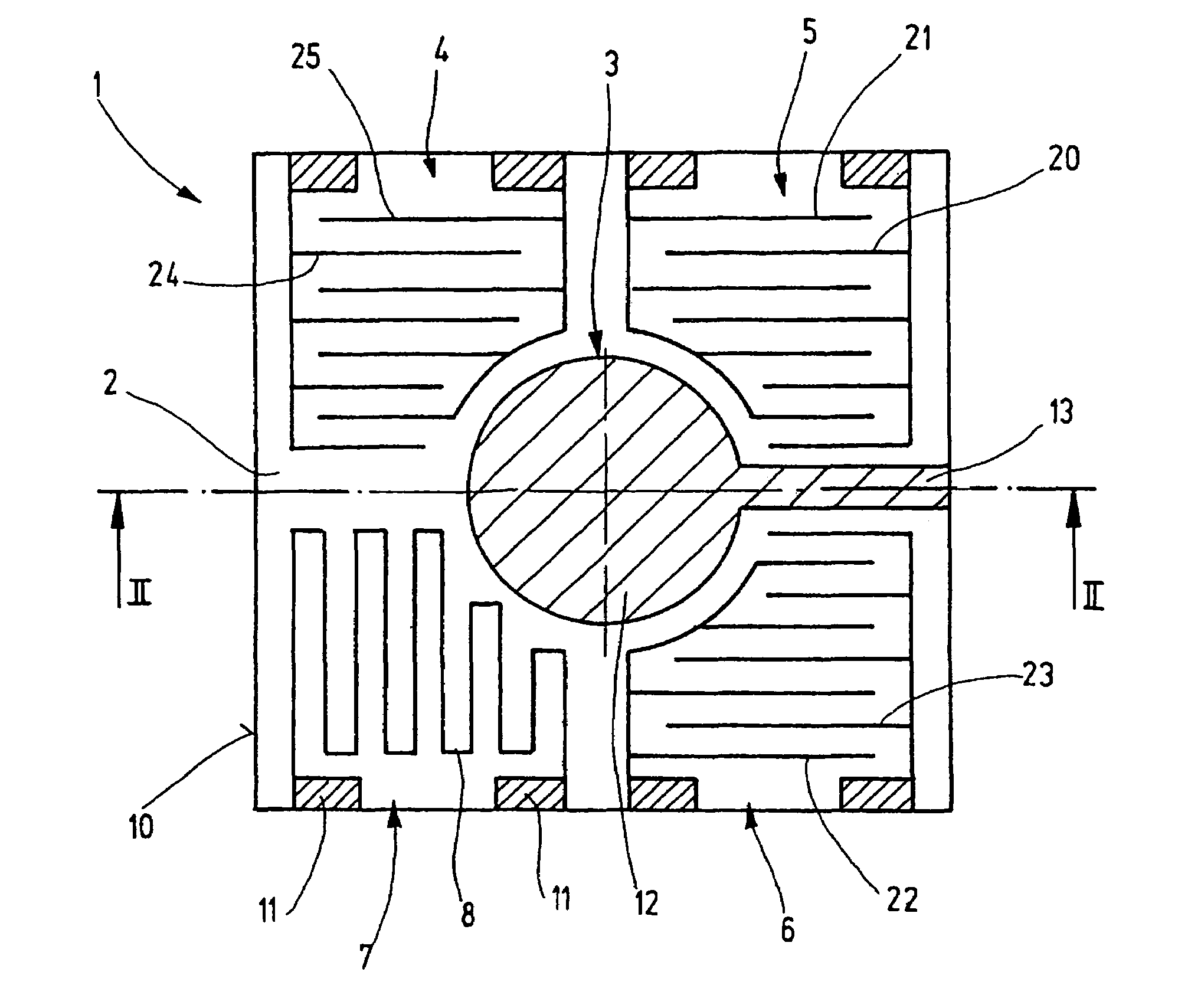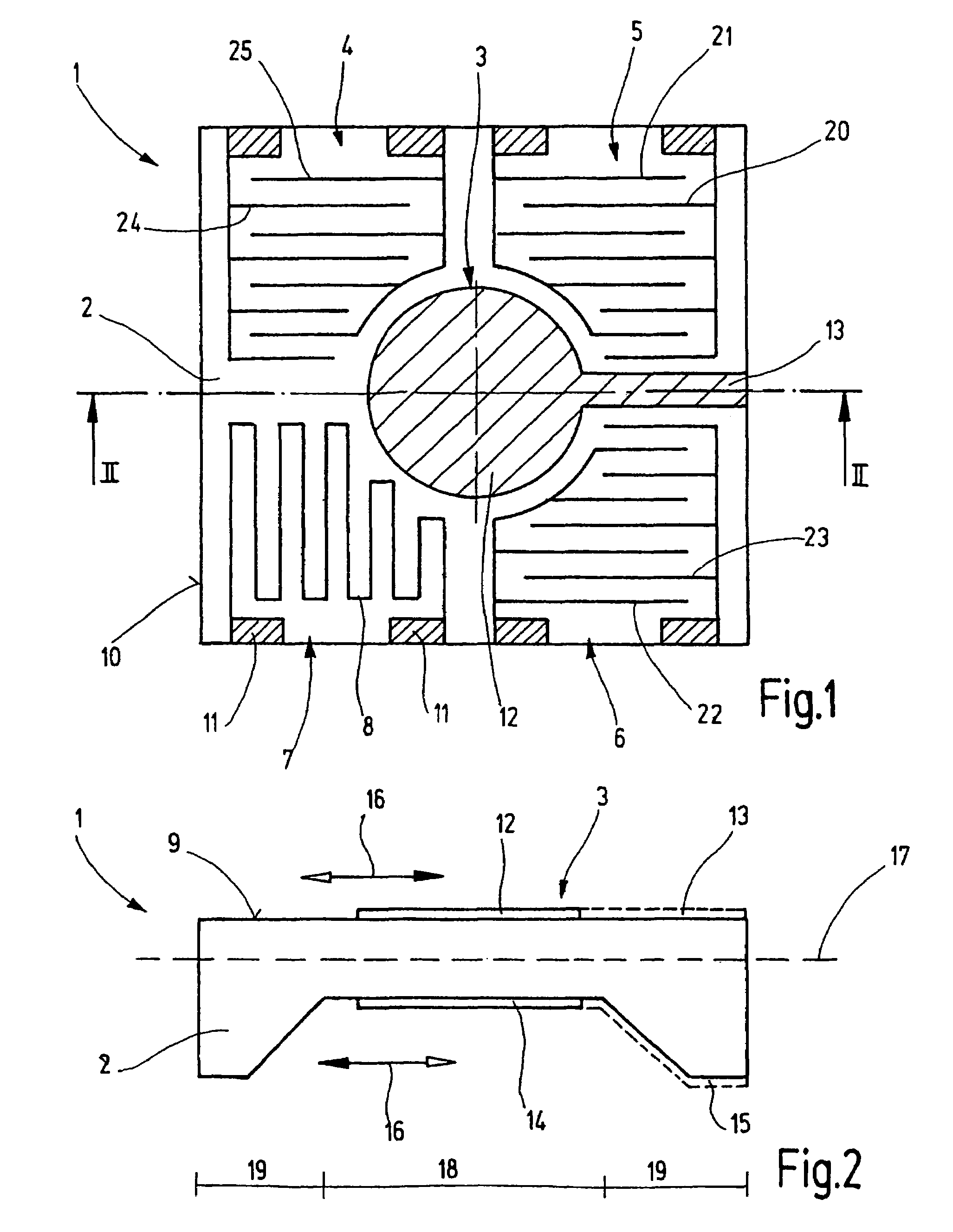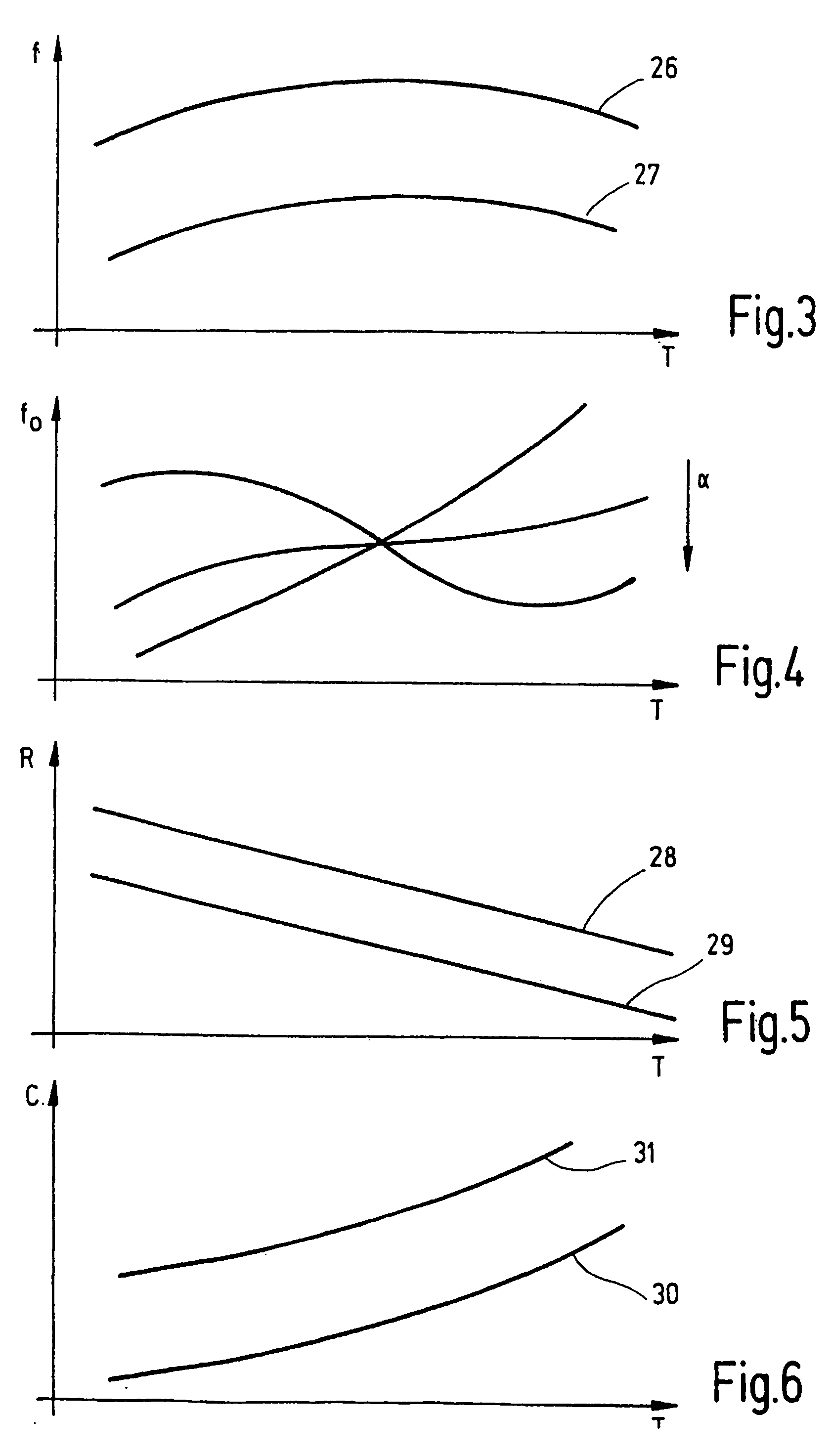Device and method for determining the quality of a medium, particularly of a lubricant and/or coolant
a technology of lubricant and coolant, applied in the field of devices and methods for determining the quality or properties of a medium, can solve the problems of low temperature and high dependence of output signals of these sensors on the temperature of the medium, and achieve the effects of good thermal coupling, fast temperature sensor reaction, and good thermal coupling
- Summary
- Abstract
- Description
- Claims
- Application Information
AI Technical Summary
Benefits of technology
Problems solved by technology
Method used
Image
Examples
Embodiment Construction
[0036]FIG. 1 is a top plan view of a device 1 according to an embodiment of the present invention for determining the quality of a medium, a lubricant and / or coolant oil in particular. A plurality of sensors 3, 4, 5, 6, 7 are mounted on a common substrate 2 immersible in the medium. Each sensor emits an electric output signal as a function of the respective sensor-specific input value.
[0037]One sensor is a temperature sensor 7, which emits an output signal which is a function more or less exclusively of the temperature T of the medium and which is more or less independent of the quality of the medium. At least one other sensor 3, 4, 5, or 6 emits an output signal which depends both on the quality of the medium and on the temperature T of the medium. All sensors 3, 4, 5, 6, 7 are very efficiently thermally interconnected as a result of the configuration as thin-layer sensors and mounting on the common substrate 2.
[0038]The temperature sensor 7 is a resistance thermometer having a res...
PUM
| Property | Measurement | Unit |
|---|---|---|
| resonance frequency | aaaaa | aaaaa |
| thicknesses | aaaaa | aaaaa |
| thicknesses | aaaaa | aaaaa |
Abstract
Description
Claims
Application Information
 Login to View More
Login to View More - R&D
- Intellectual Property
- Life Sciences
- Materials
- Tech Scout
- Unparalleled Data Quality
- Higher Quality Content
- 60% Fewer Hallucinations
Browse by: Latest US Patents, China's latest patents, Technical Efficacy Thesaurus, Application Domain, Technology Topic, Popular Technical Reports.
© 2025 PatSnap. All rights reserved.Legal|Privacy policy|Modern Slavery Act Transparency Statement|Sitemap|About US| Contact US: help@patsnap.com



